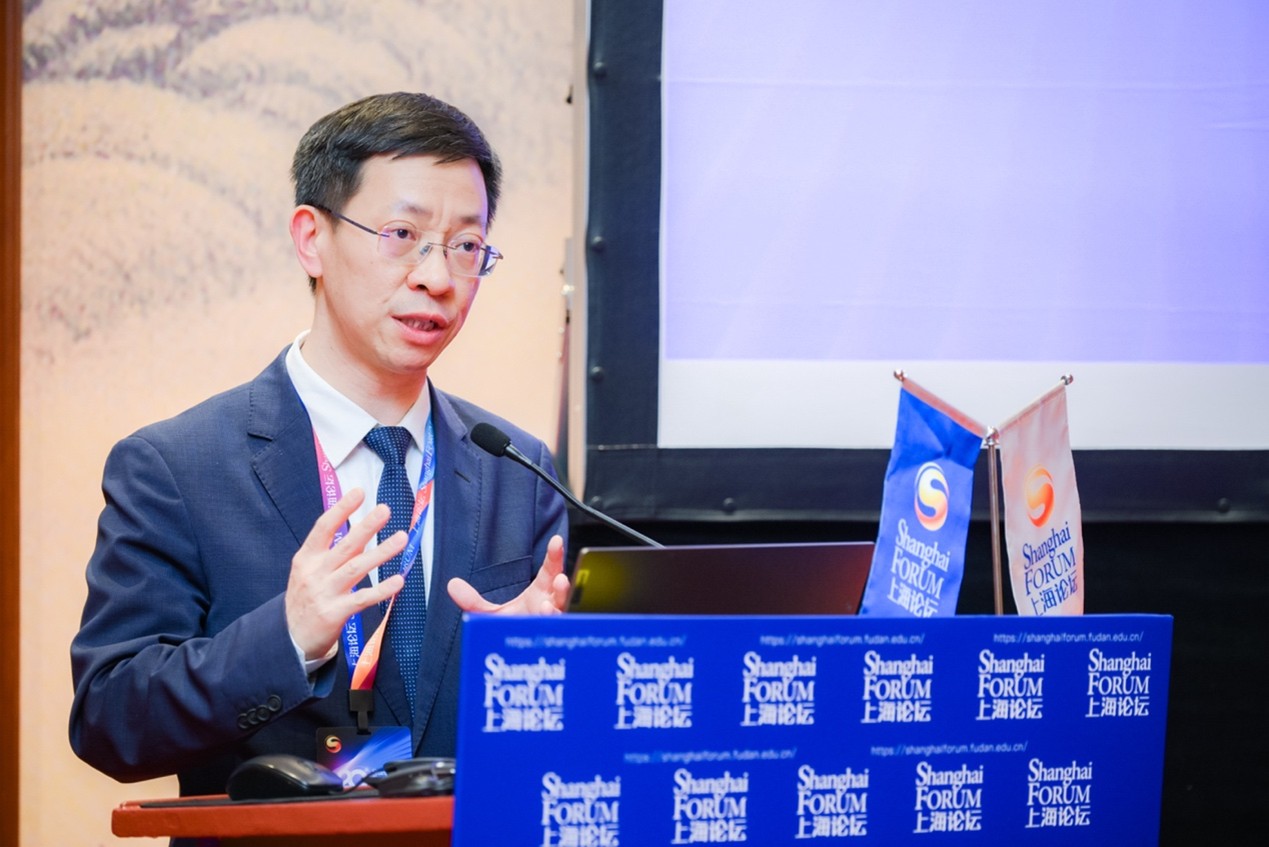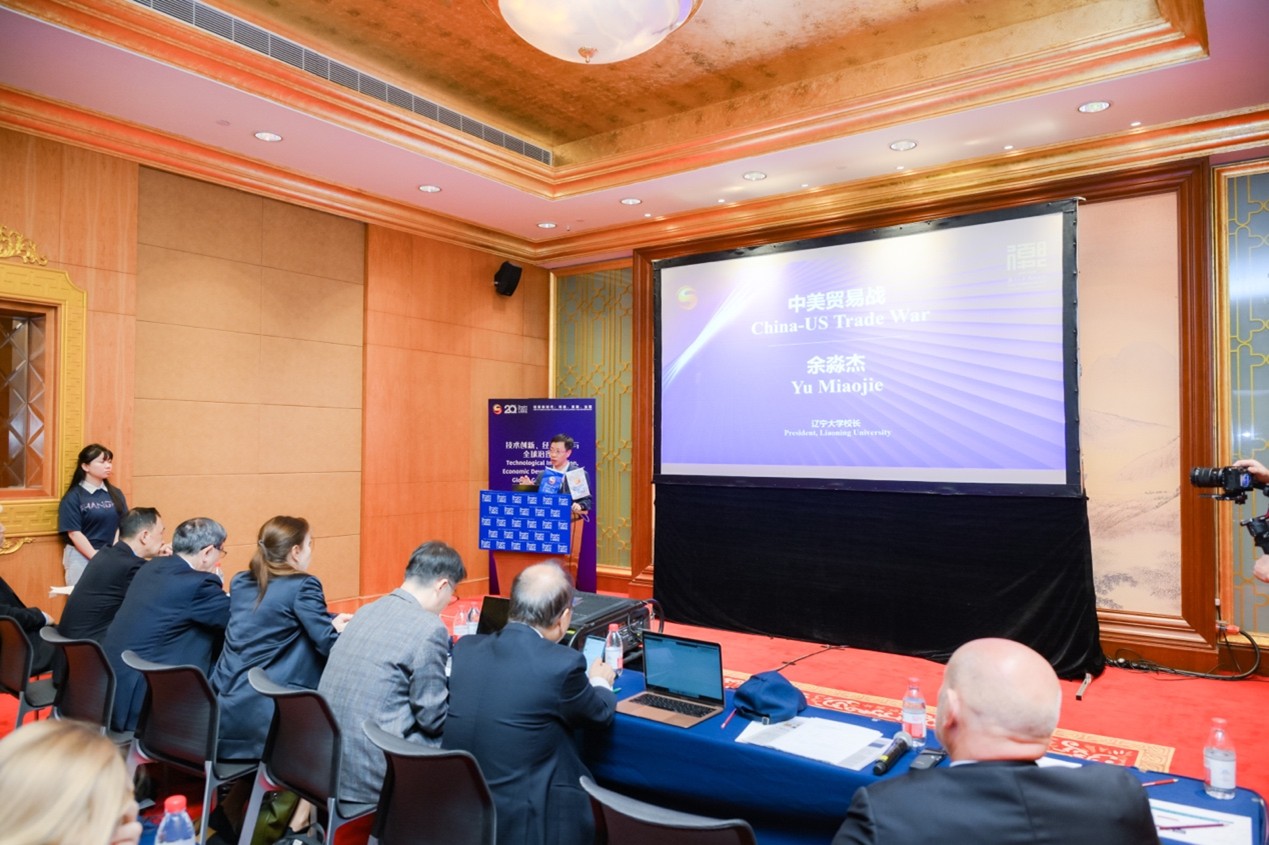The Shanghai Forum 2025 annual conference was held in Shanghai from April 25 to 27. Centered on the theme of An Era of Innovation: Technology, Development, and Governance, the forum brought together more than 500 guests and representatives from think tanks, universities, government agencies, enterprises, and media organizations across over 50 countries and regions. Participants engaged in in-depth discussions on shared global challenges and contributed insights toward building a more inclusive and equitable path for development in Asia and around the world.
Professor Yu Miaojie (President of Liaoning University) and Professor Woo Wing Thye (University Chair Professor at the China Institute for Economic Research of LNU) were invited to deliver keynote speeches at the 2025 Shanghai Forum. Both members of LNU shared their insights on global governance and economic development, focusing on the challenges of a multipolar world.
The following is a summary based on Professor Yu's remarks.

The Trump administration launched the US-China trade war based on four main arguments. First, the United States ran a substantial trade deficit with China, amounting to approximately $360 billion in 2022. Second, the administration claimed this was due to unfair tariff structures—China's average tariff was about 7.5%, compared to the US’s 2.5% before 2018. Third, Trump believed higher tariffs would restore domestic manufacturing. Fourth, the strategy aimed to halt China’s industrial upgrading.
These justifications are flawed. The US maintained a significant surplus in service trade with China, approaching $300 billion. When accounting for the profits of US multinationals operating in China, the economic benefit to the US increases further. After the 2020 Phase One deal, tariffs became nearly equivalent—21.3% on Chinese exports to the US and 21.7% on US exports to China. Moreover, the US lacks the capacity to replace Chinese imports with domestic production, leading instead to a shift toward other developing countries, which still cannot match China’s efficiency. Lastly, China’s industrial upgrade remains unstoppable due to its comprehensive supply chain covering 41 major industry categories, 207 intermediate sectors, and 666 specific sub-industries.
Several developments may emerge from the trade war’s continuation. Trump may return to the negotiation table within a quarter, potentially initiating Phase Two of the trade deal. High tariffs are fuelling inflation in the US and increasing consumer burdens, while alternative supplier countries lack sufficient capacity.
Even if China agrees to increase imports from the US, the availability of high-value goods such as advanced machinery is limited due to export restrictions, and agricultural products alone are insufficient to resolve the trade imbalance. Persisting with high tariffs could fracture the global economy, as affected countries like Canada and Mexico consider alternative markets during temporary tariff pauses.
There is also a risk that the United States-Mexico-Canada Agreement (USMCA) could collapse due to the structural economic divergence among its members. Within three years, the trilateral agreement may become unsustainable.
Simultaneously, new trade blocs may gain prominence. ASEAN-China cooperation, RCEP, and EU-China relations may converge into a larger economic zone. China may export intermediate goods to ASEAN for further assembly and re-export. The China-Korea-Japan FTA and the China-EU Comprehensive Agreement on Investment (CAI) are also likely to advance.

China’s counter-strategy is structured around a comprehensive “All-round Opening-up” policy, focusing on three pillars:
Expanding Trade Scale. China is increasing imports through platforms like the China International Import Expo, aiming to reduce trade surpluses and affirm its role in global commerce.
Broadening Trade Scope. Efforts are underway to diversify trade partners, as demonstrated by the surge in China-Russia trade to nearly $200 billion in 2023. China is also promoting service trade through tourism and international education, backed by improvements in soft infrastructure.
Green trade and digital trade are key priorities. With ecological civilisation enshrined in its constitution, China is expanding low-carbon exports. Its digital economy now accounts for half of its GDP. As China’s economy moves up the value chain, there is a growing emphasis on exporting higher value-added intermediate goods. Outbound investment is encouraged to facilitate technology transfer and employment abroad, while China remains attractive for capital-intensive foreign direct investment due to its industrial clusters.
Deepening Institutional Integration. China supports multilateralism by endorsing WTO reform and aligning domestic regulations with global standards. It is advancing industrial norms such as ISO certifications and working to improve managerial capacity in firms. The goal is to transition from a factor-driven to an institution-driven opening-up model.
In the words of Winston Churchill, as echoed in the film Darkest Hour, there is no final failure, there is no final success. It is the courage to continue that counts.
